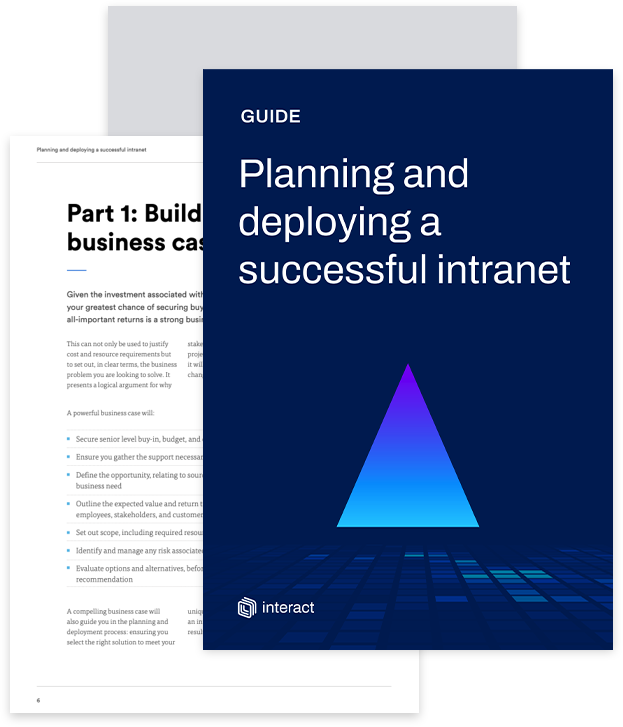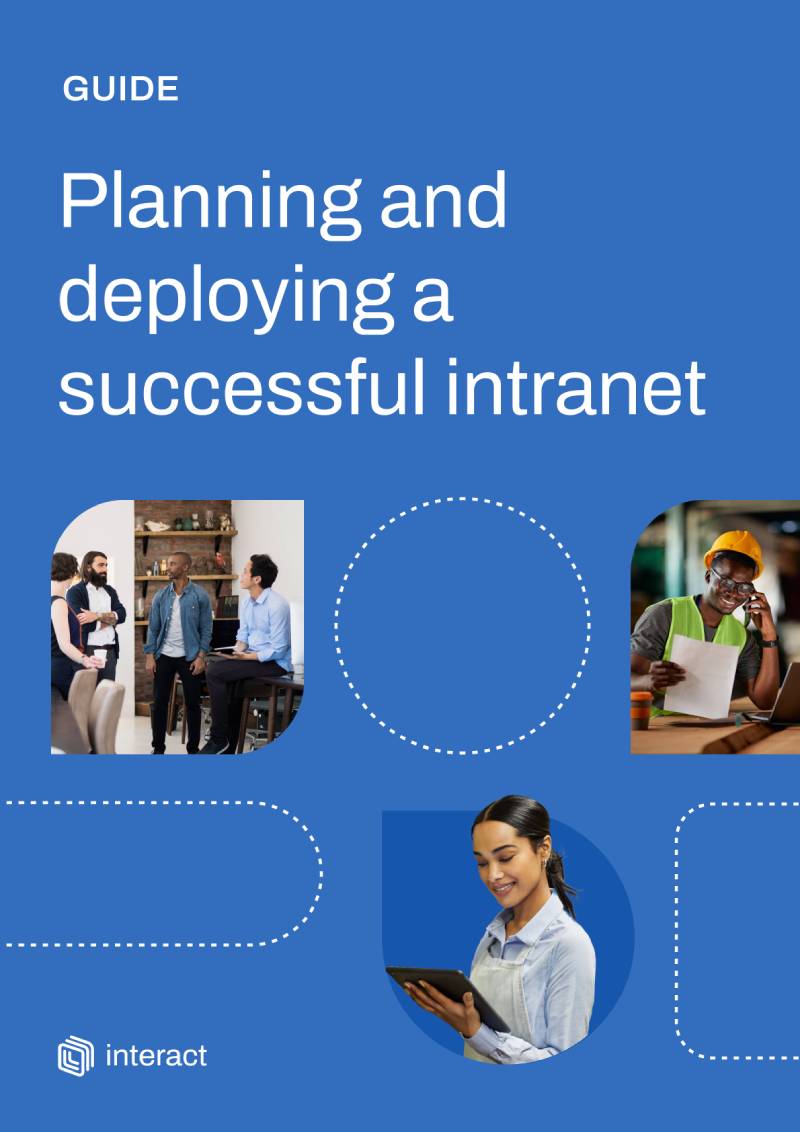Following Meta’s decision to shut down Workplace, this article charts the rise and fall of the platform once dubbed ‘Facebook at Work’, and explores the viability of social features in the digital employee experience.
In a surprising move, Meta has announced the closure of its enterprise collaboration platform, Workplace. After less than a decade of operation, the familiar social media-like interface for businesses will cease being fully functional on August 31, 2025, from which point it be available as read-only for a limited time before it shuts down completely.
Let’s rewind and see how Workplace entered the collaboration scene.
After 18 months of beta testing as ‘Facebook at Work’, a rebranded ‘Workplace’ launched into the enterprise collaboration software market in late 2016.
Though arguably late to the game compared to others already dipping a toe in the ‘collaboration tools’ field, Workplace from Meta certainly caused a stir. It didn’t evoke a full-page open letter from Slack, but it did trigger speculation. At the time, parent company Meta had not been established, so Workplace was marketed as a Facebook product. After years of being labelled a productivity stealer, could Facebook’s social media functionality really translate into business environments?
What is Workplace from Meta?
Positioning itself as the newest alternative to Slack in 2016, Workplace claimed to “Connect everyone in your company and turn ideas into action.”
In its development of Workplace, Meta capitalized on one strong selling point: its familiarity. With over 1.79 billion monthly users, the social media giant had a ready-made user market who could recognize the experience from their personal Facebook accounts. While the two platforms (and users accounts) operate entirely independent of one another, helping to separate the personal / professional divide, features doubled up across both.
Groups made for dedicated ‘team’ areas, with user News Feeds delivering instant updates. The Facebook Messenger function doubled up as Work Chat for IM functionality, while in-app call and video conferencing functionality took a stab at Skype’s offering. Users could post updates, uploading pictures, videos or files, while others could comment, like or tag colleagues for a true social network feel.
Events, a popular feature of Facebook, were carried across for work-based activities. Co-worker profiles also adopted the same look and feel of Facebook – merely swapping out the recognized blue branding for white.
Free ebook – Planning & deploying a successful intranet
The notable differences for Workplace compared to its mother product were minimal. It was be the first paid service of Facebook, and in order to cater for the enterprise market, the platform provided enterprise level security certification and a commitment that all data was owned by its customers, not Workplace.
The devil you know?
The familiarity of the Workplace interface had the benefit of removing training needs. Businesses could reduce the risk of low adoption by giving users something they knew and used on a daily basis: addressing the common ‘fear of change’ that can deter many from embracing new technology.
This reliance on familiarity, however, may have also been a blueprint for its failure.
Though Meta was eager to point out Workplace’s separation from its consumer platform, the indistinguishable nature of the two presented a challenge. Responding to an article by The Guardian on Facebook’s announcement, one commenter suggested that within a single week “activity has almost completely faded into nothing” and that most of the posts were “fluff”.
Free ebook – Planning & deploying a successful intranet
What’s more, younger generations entering the workforce aren’t as keen on Facebook as older generations. Research shows that less than two fifths (37%) of Gen Z users are active on Facebook while its usage among millennials is in decline and dropping year on year.
With this in mind, Meta and the organizations using Workplace could not simply rely on its similarity to Facebook to ensure engagement or make their employees better connected. The platform needed to offer more value for its end users.
Another issue was Workplace’s differentiation, or lack of it.
Within four years of Workplace’s launch, the Covid outbreak and post-pandemic attitudes to work compelled businesses to modernize rapidly through the adoption of employee communication apps and intranet software that would give remote, hybrid, and deskless employees seamless access to colleagues, tools, and resources.
While Workplace was one option for businesses looking to enhance the digital employee experience during this time, it was one of many and stood in a crowd of better established players. It pitched itself against the likes of Slack and Microsoft Teams, while organizations like Interact have been active in the space for decades, providing enterprises with award-winning intranet and employee experience software.
Usage vs. integrations
When it came it came to sizing Workplace up against these established competitors, organizaitons looking for more than social features may have been disappointed at the outset.
At a time when businesses were becoming increasingly reliant on various software tools, the platform was slow to provide integrations. Established competitors to Workplace were already integrating seamlessly with other business tools companies already used while also offering similar social features.
Speaking at an interview in London covered by Tech Crunch around the time of Workplace’s launch, director of Workplace Julien Codorniou pointed to a deliberate choice by the platform to side-skirt integration functionality with other business applications during development.
“We wanted to talk about an easy to use product and democratic pricing with customers.”
“When I talked to the CEO of Danone, whose 100,000 employees include many people without computers and desks, usage and engagement were more important than whether Workplace integrated with Workday or Quip.”
Free ebook – Planning & deploying a successful intranet
You can understand his argument, but when considering the ultimate goal of Workplace – a collaboration space for workers – I’d say it was a flawed philosophy.
For remote or frontline workers without access to computers, completing everyday tasks via mobile devices requires a streamlined approach. Juggling multiple platforms, multiple user accounts and multiple passwords does not make for good productivity – or a positive user experience. In its SMB Cloud Landscape Report, Intermedia calls it “death by 1,000 cloud apps”.
At the outset, Workplace didn’t hold hands with any cloud storage providers such as SharePoint, Dropbox or OneDrive. There was no functionality to upload pictures, videos or documents directly to the timeline – or add a link, which then took you out of the platform. Without empowering employees to collaborate on a single version of truth within Workplace, prospective customers could have seen this as a recipe for disaster in terms of duplicated effort and multiple versions of documents awaiting their staff.
These valuable integrations eventually came to Workplace, but it may have been too little too late for organizations who may have instead chosen competing platforms that felt better developed and more market-ready, with more rounded out feature sets.
Why is Meta closing Workplace?
In its early iteration, Workplace’s reliance on its resemblance to Facebook, combined with its lack of other useful features might have overshadowed its potential, raising concerns about its long-term viability. However, one source has suggested to Tech Crunch that the real reason Workplace will close is because Meta is shifting its focus toward developing its Metaverse projects.
This decision has raised a few eyebrows as it leaves Workplace customers in a tight spot, giving them limited time to find a new solution. To maintain business continuity and avoid disruption to the digital employee experience, this abrupt change demands a quick and smooth transition to a replacement, which could create a significant headache for CTOs and other stakeholders amidst the pressures of other existing projects.
Free ebook – Planning & deploying a successful intranet
However, with Interact, this process becomes much simpler and less stressful as our seasoned experts can ensure a seamless migration with minimal effort required from IT teams. Our enterprise-grade intranet software is designed to feel familiar and user-friendly, ensuring easy adoption for employees, and as a low-code platform, customization, maintenance, and content management are easy for platform owners (often internal communications teams) without the need for IT intervention.
This streamlined process not only saves time but also reduces the workload on IT departments, making Interact an ideal alternative to Workplace for organizations transitioning away from the platform.
Is there still a case for enterprise social networking?
With the sun setting on Workplace, organizations looking for alternative solutions would be right to ponder whether social networking features really belong in the connected digital workplace, or whether Meta’s decision suggests this has all been a failed experiment. However, recent trends show a growing appetite for social tools in the workplace, but only when those tools are nestled among other features that enhance productivity, and enable communication and collaboration.
This underscores the need for a comprehensive platform that transcends basic social interaction.
Modern enterprises demand a suite of features including multichannel communications, pulse surveys, custom homepages for different departments, idea management, role and location-based personalization, and AI content generation. When combined with social intranet features, this multifaceted approach not only enhances employee engagement but also streamlines internal operations, and fosters innovation.
To truly capitalize on these capabilities, organizations should turn to established vendors with decades of experience in deploying employee experience solutions for enterprises. Such vendors bring a proven track record and a deep understanding of the unique challenges and needs within the digital workplace landscape. Their experience ensures a robust and reliable implementation, backed by continuous support and improvement.
In contrast, companies like Meta, which lack a solid foundation in the enterprise digital workplace, have shown the risks of adopting solutions from inexperienced providers. The decision to discontinue Workplace highlights the instability and potential disruption that can arise from relying on vendors without a dedicated focus on enterprise needs.
By partnering with a seasoned vendor, enterprises can ensure they receive not only a stable and secure platform but also an exciting product roadmap. This guarantees that the platform will evolve to meet future demands, keeping the organization ahead of the curve in employee experience and productivity. The choice of a well-established vendor is therefore crucial for sustaining long-term success and fostering a dynamic, connected, and innovative workplace environment.
Free ebook – Planning & deploying a successful intranet
Main image by wayhomestudio on Freepik.



